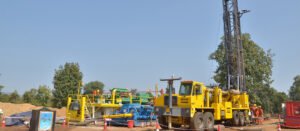New Delhi (Defence Correspondent): In order to catch up with the fast-paced growing technology in defence sector, the Indian Army is now planning to revolutionise its cutting-edge operational capabilities using artificial intelligence (AI). This, the top leadership believes, will not only enable it to innovative and strategies but also dominate the battlefields in unforeseen conflicts.
Integration of artificial intelligence to modern warfare equipment of today’s age will help developing military systems that are capable of enhancing battlefield awareness and enabling informed, real-time actions. Further, AI enabled communication systems and its all-terrain adaptability are expected to further bolster the army’s communication and response.
Moreover, such advancement projects also align with India’s ambitious Viksit Bharat projects as India expands its defence infrastructure to enter the race for becoming a global leader in defence innovation.
But what do we exactly mean when we talk of effective usage of artificial intelligence in the army.
To start with, some of the AI technologies that India and the world powers are eyeing, include Swarm Drones — a group of drones operating in conjunction with ground manoeuvre forces.
The shaping of the battlefield can be greatly influenced by Drone Swarms, thereby allowing preservation of decisive columns of mechanised forces initially and the application of such forces at a place and time of choice.
The advantages of affordability, flexible employability, redundancy, precision, reduction in mission costs, Beyond Visual Line of Sight (BVLOS) attack capabilities and risk of human causalities make Swarm Drone a potent weapon for conventional as well as non-conventional military operations.
Swarm Drones can also be effectively used to detect enemy ground activities and target enemy ground forces to include troops, vehicles and command and control links.
Other than this, AI enabled Mine Detection equipment are much sought after as they are capable of detecting mines and marking mines using an illuminating spray.
This device, movable on all kinds of terrain, consists of robotic arms and has different cameras for accessing the detected mine.
Other than focusing on integration of such technologies with Artificial Intelligence, India and countries like South Korea and Israel are also working on developing AI based surveillance robots for manning of the border fences. These robot can be controlled from computers or tablets and android app as well as function autonomously within set limits.
To add more names, many more technologies like fast interceptor boats with navies, automated room intervention drones, radars and remotely operated vehicles are also expected to become AI enabled in the near future changing the war game completely.
Even though AI is being looks at as a boon for mankind, its usages go beyond human intelligence and understandings. At one hand while the use of AI in advanced military software and technologies can bring in safety for soldiers, reduce human intervention, and result in quick decision-making the functioning of autonomous weapon systems brings uncontrollable risks too.
While it may create challenges for compliance with international law, the AI based decision making may also increase chances of conflict escalation.
Experts believe that it may very well be the need of the hour in terms of rising global competition for advancement of defence technology but at the same time application of AI in military usage will require more caution than passion.









